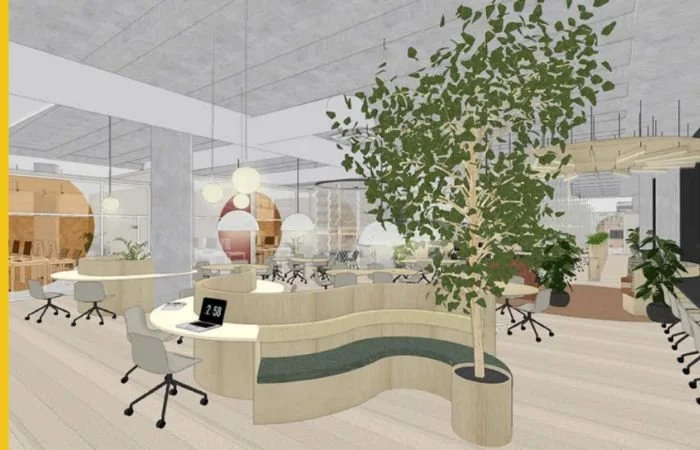Why the flexible workspace phenomenon is growing

We live in a society that’s constantly evolving, and business workspaces are equally subject to change, often in correlation with technological advancements. Traditionally, offices work on a set allocation of space for teams or individual employees, but new initiatives involve flexible office space as an alternative solution.
What is a Flexible Workspace?
It is a great way for companies to implement versatile space solutions, where the flexible office space is often referred to as shared office space or flexispace. The flexible workspace includes basic equipment like desks, chairs, and phone lines, embracing a setup that offers different types of employees a temporary, physical office space.
Businesses can consequently maximise the benefits of cost efficient solutions, benefiting from hot desking and mobile working. This allows staff to work from alternate locations when necessary, and employees from different companies can also share workspaces. Business owners are thus afforded access to offices without committing to contract terms.
Changes in Demand?
It seems the demand for flexible workspace will increase throughout 2018, as it’s set to become a trending topic in property and business. Since 2013, co-working and hybrid space has doubled globally, accounting for a third of all flexible space across the world. Market changes deriving from political and economic outcomes have made flexible office space more vital, sine it offers flexibility as markets face uncertainty. In an era where millennials will soon inherit the workforce, this generation is perhaps seeking a meaningful connection with the places they work.
Research suggests that in the UK the flexible workspace is growing more than 15% YoY, and at an even more advanced rate across EMEA. A result of this has led to a number of shared office space locators and providers have started up, covering the gap in the market – and they cater to a number of niches. Some, like Cornerstone Office Search, are geared towards London, offering a stylish, tailored solution.
Predictions on Market Growth - Are Landlords Changing Their Approach?
In 2016, the supply of co-working grew by double figures in central London, and some experts predict this growth will spread to satellite towns and rural locations. To remain competitive, landlords are adopting a new approach to meet high demands for office space. This will potentially be more lucrative for landlords, who can offer higher premiums for shorter contract terms.
What Type of Companies Are Seeking Flexible Space?
Conventionally speaking, technology companies are viewed as the most suited to flexible workspaces. Though typically start-ups and SMEs are renowned for adopting this approach, there has recently been a huge increase in inquiries from mid-to-large-sized companies. The advantages of flexible workspaces in terms of cutting costs for start-ups cannot be ignored however, which is why we can see a tendency towards this option for start-ups in particular.
The Future of Flexible Office Space - Global Expansion
The flexible workspace has slowly developed into a worldwide phenomenon, and increasing demand means increasing competition. New challenges will stem from attracting and retaining members, and the people who succeed will be those who offer something different. It seems the flexible workspace will continue its meteoric rise throughout 2018. According to Ryan Simonetti, the CEO of Convene, 30% of commercial office real estate will be flexible by 2030. Research shows that flexible office space has grown by 22% over the last seven years, compared with a 1% growth in traditional office space over the same period. The demand for short and flexible-term lease options is increasing globally, and the trend will accelerate as large global enterprises capitalize on flexibility in their long-term real estate strategies.
The expansion will be witnessed among existing operators, but also new operators entering the market as real estate owners. Richard Smith, who has worked in the UK workspace market for 25 years, suggests large investors like Brockton, Blackstone, and British Land are taking and funding space within their respective industries.
Large corporate companies are looking at ways to let flexible office space to provide new revenue streams, a logical decision for those who have excess space. Liz Elam, founder of GCUC global, believes corporate adoption will continue to fuel the co-working industry in 2018. Build-to-suit and floors of managed space will be incorporated by savvy operators, who will have an opportunity to cash in on the increased demand for flexible workspace.
Conclusion
Providing we stay in an up-market, the continued growth of the flexible workspace market seems inevitable. The shared space phenomenon will excel as ‘co-working’, a buzzword you can expect to hear as the year transpires. Investment will grow as workspace models are proved profitable through a maximum occupancy approach.
New leasing models and partnerships are set to become the norm, and co-working operators will facilitate flexible workspaces to corporate tenants. The flexible workspace is set to solidify itself as a viable, sustainable segment of the office market, and we are just treading water in terms of its potential.







































































































